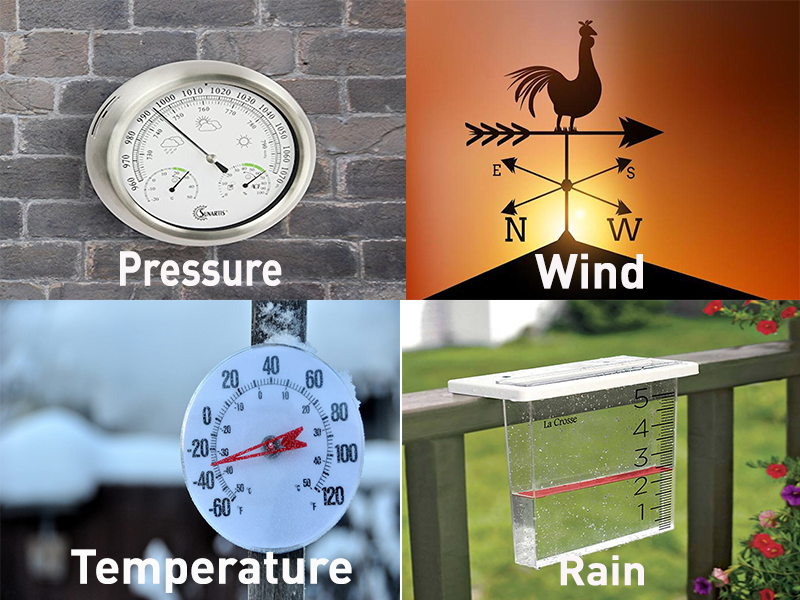What does your bowhunting to-do list look like before you drive to your hotspot? Let me guess: It includes dressing head-to-toe in camouflage, slipping into your hunting boots, and packing your bow, arrows, release and treestand or ground blind. You might also review your hunting plan, and grab a snack and water bottle. With everything in order, you’re ready.
But wait! Did you check the weather?
If weather isn’t a priority, you might want to rethink your strategies. Weather reports prepare bowhunters for the elements and help outsmart their quarry.
Peter Solin, 27, of Wyoming, checks the weather before and during each hunt, a habit he learned from his father and grandfather. Solin has bowhunted for 15 years. In the past five years, he’s learned how weather affects deer behavior, and his personal safety and hunting strategies.
We spoke with him to learn how he evaluates weather forecasts to decide what to wear, and when and where to hunt.

Hunting in the rain in fine, but avoid sitting in the field if there’s lightning. Photo Credit: BowhuntingMag
“The main reason I check [the weather] is to make sure it’s safe to go hunting,” said Solin, an assistant engine captain in wildland firefighting. As such, he knows the weather can be unpredictable and dangerous.
“I know the dangers of lightning,” he said. “If it’s going to storm, I’m not going to be in the woods.”
You also won’t find him afield on extremely hot, cold or windy days. Solin said he’s almost gotten frostbite, and it’s “absolutely terrifying” to sit in a treestand during high winds. If wind speeds exceed 10 mph, consider hunting from the ground.
Bowhunters who deal with snow and freezing rain must also consider road conditions when deciding whether to hunt. If the overall weather forecast makes you question if it’s safe to bowhunt, don’t risk it.

Keep an eye on the four main weather elements. Photo Credit: Amazon UK, Vecteezy, Valley Heritage Radio, Wind and Weather
According to the National Geographic Encyclopedia, air has weight and presses into everything it touches. A barometer measures this atmospheric pressure, or “air pressure,” and the measurements indicate weather conditions. Low-pressure systems usually create wind, clouds and precipitation. High-pressure systems typically mean fair, calm weather with clear skies.
Solin watches the barometer to determine when low- and high-pressure systems will arrive. He said animals tend to move more as weather conditions change, and studies confirm it.
You can identify pressure systems by noticing how much the barometer changes one day to the next. Solin looks for a 10-degree decrease or increase between two days. Pressure changes help you predict when whitetails are most active.
“Animals don’t move as much during stagnant pressure, or when you don’t get a lot of change in weather patterns,” Solin said. “When I go hunting, I really want to sit right before or after a storm system moves through.”
Don’t overlook wind direction, either. Whitetails have an incredible sense of smell, so try to set up your stand or blind downwind of where you expect to see deer. If possible, set up two stands on opposite sides of a field, trail or other high-traffic site so you can hunt most winds. Choose the best site after checking the forecast.
On hot days, wear lightweight, breathable clothing and uninsulated boots, and drink enough water to avoid dehydration. On cold days, dress in layers. Wear base layers to walk to your stand to avoid sweating. Once there, add your warmer layers, hat and gloves.
Hunters can often predict deer movements based on temperature. During extreme cold and heat, deer conserve energy by remaining still and staying closer to food. Deer often lie low in summer and early fall during high heat, but increase their activity as temperatures drop. They also lie low in extreme cold during late fall and winter, but move when temperatures warm. Monitor heat waves and cold fronts to pick ideal hunting times.
Solin sees some of his biggest deer while sitting in the rain. Rain often results from shifts in atmospheric pressure, so Solin suggests watching those shifts to boost your odds.
If you hunt in the rain, beware of the risks. Tree bark and treestands can get slick and dangerous. Rain also washes away blood, making blood trails hard to follow. Snow can create similar challenges.
To stay dry, consider hunting from a ground blind to shield you from the elements. Either way, buy and use lightweight rainwear.

Handheld weather monitoring devices will allow you to measure the weather in your specific location. Photo Credit: 1800Gear Blog
Install a weather app on your smartphone to stay informed on weather conditions. Solin has six weather apps on his phone – half for hunting and half for his job – but most hunters need only one or two. The most popular apps are AccuWeather, ScoutLook, OnX Maps, Weather Bug and NOAA Weather Radar Live.
Forecasts aren’t perfect, of course, and don’t cover all rural areas. “You can type in a town name and get weather conditions for that area, but you might be hunting 15 miles out of town,” Solin said.
Solin uses a portable weather meter for accurate, site-specific readings. He also uses a Kestrel DROP D3, which he hooks to his backpack or leaves in his stand overnight to collect data. He studies the data with his phone’s Kestrel app.
“(It) gives me live-time and location feedback on what the weather is doing exactly where I’m sitting,” he said. “It’s pretty cool.”
Weather apps also list sunrise and sunset times. Hunters use this information to set their alarms and give themselves time to reach their stand and set up in the dark before legal shooting light. All that information is a bowhunter’s best friend, Solin said.
Never underestimate weather’s power and indifference. Be safe and hunt smart.